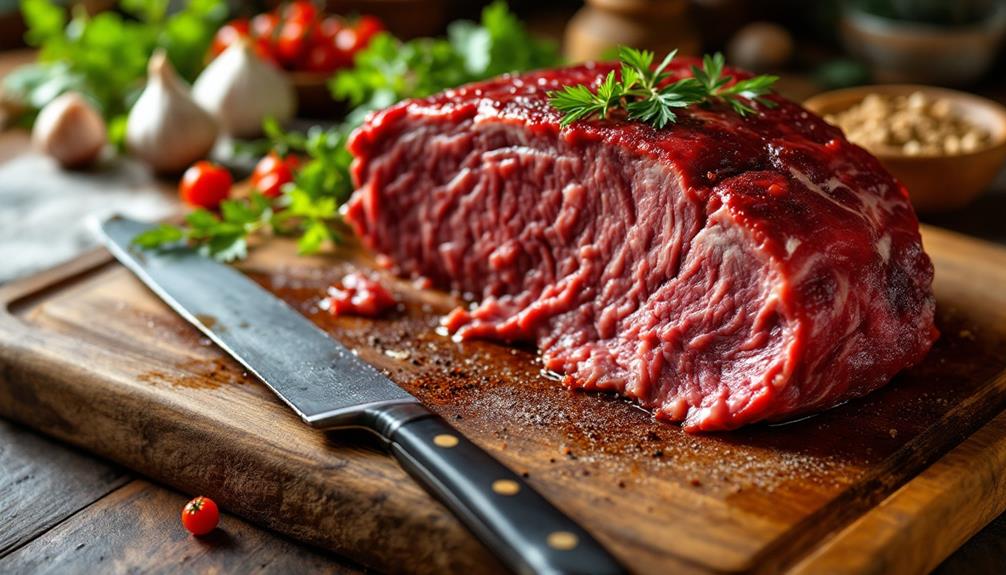When you're ready to tackle cooking beef brisket, the first step is choosing the right cut. You'll want a well-marbled piece that promises tenderness and flavor, but the journey doesn't stop there. Once you've got your brisket, it's essential to prepare and season it properly to enhance its natural qualities. Whether you're considering smoking, braising, or using a pressure cooker, each method offers unique advantages. But before you make a decision, think about the secrets to achieving that perfect slice and the best way to serve it.
Key Takeaways
- Choose a brisket cut with good marbling; point cuts are more flavorful, while flat cuts are leaner and easier to slice.
- Trim the fat cap to a quarter inch, then season generously with salt, pepper, or your favorite rub on all sides.
- Let the seasoned brisket sit at room temperature for an hour or refrigerate overnight to enhance flavor penetration.
- Cook using your preferred method, such as smoking for deep flavor or braising for tenderness, depending on time and equipment.
- Allow the brisket to rest for 30 minutes after cooking, then slice against the grain for optimal tenderness.
Choosing the Right Brisket
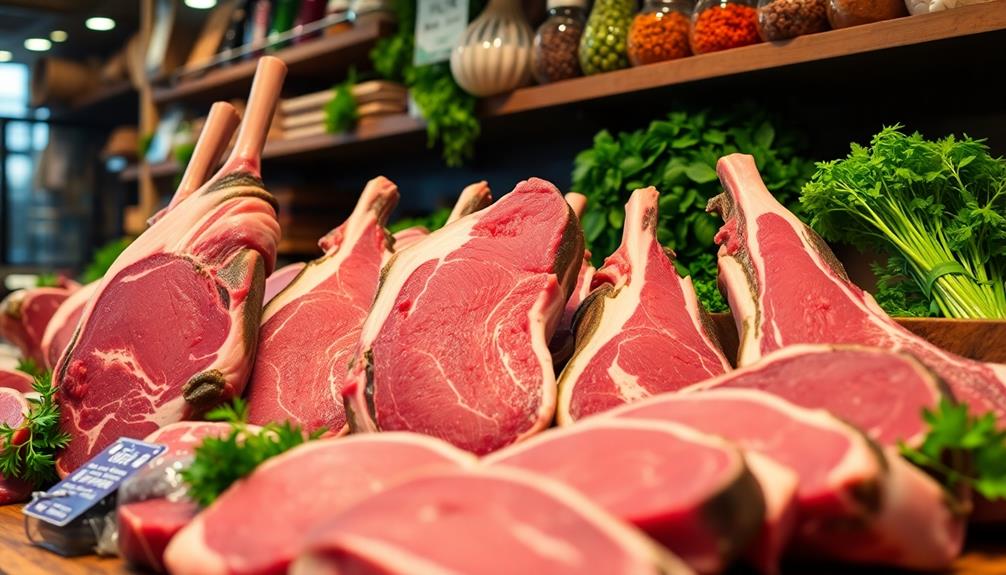
When it comes to choosing the right brisket, look for a cut that has a good balance of meat and fat. You want a brisket with a nice marbling, as this fat will help keep the meat juicy and flavorful during cooking. The point cut, which has more fat, is often more tender and flavorful, while the flat cut is leaner and easier to slice. Depending on your cooking method and preference, you may choose one over the other.
Pay attention to the thickness of the cut as well. A thicker brisket can take longer to cook, but it also provides more opportunities for developing those rich, smoky flavors. When selecting your brisket, check for a bright red color, which indicates freshness, and avoid any cuts that look dull or brown.
Lastly, consider the size of the brisket based on the number of servings you need. A general rule of thumb is to plan for about half a pound of meat per person. This way, you'll have enough for everyone, plus some leftovers to enjoy later!
Preparing the Brisket
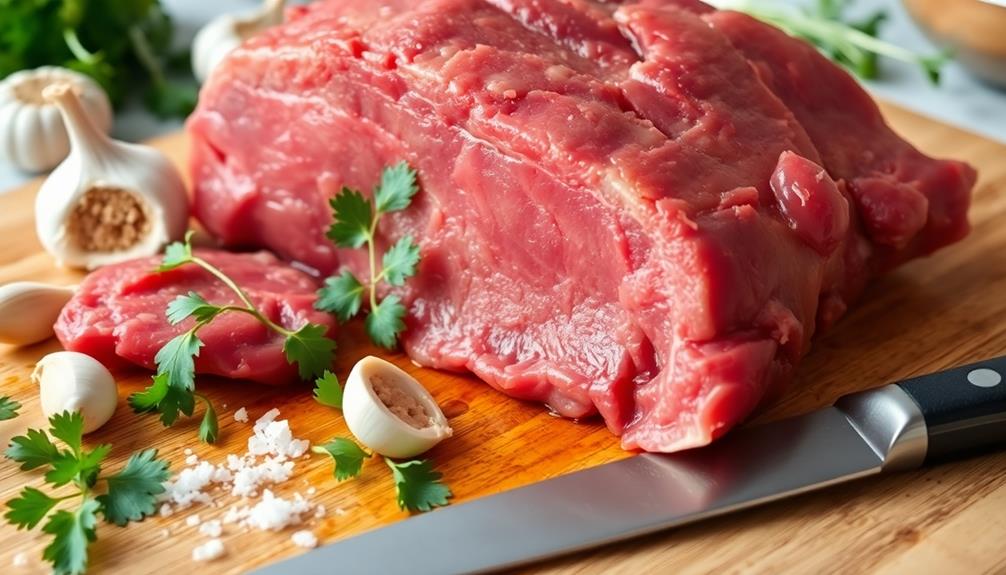
Once you've selected the perfect brisket, it's time to prepare it for cooking. Start by trimming the fat cap. Aim to remove about a quarter of an inch, which allows for better seasoning and helps the meat cook evenly. Don't worry about removing all the fat; some is necessary for flavor and moisture.
Next, pat the brisket dry with paper towels. This step helps the seasoning stick and ensures a good bark when cooking. Once dry, season generously with salt and pepper, or use your favorite rub. Make sure to cover all sides for maximum flavor.
If you have time, let the seasoned brisket sit at room temperature for about an hour. This allows the flavors to penetrate the meat more deeply. Alternatively, you can wrap it in plastic wrap and refrigerate it for several hours or overnight for even more flavor.
Cooking Methods for Brisket
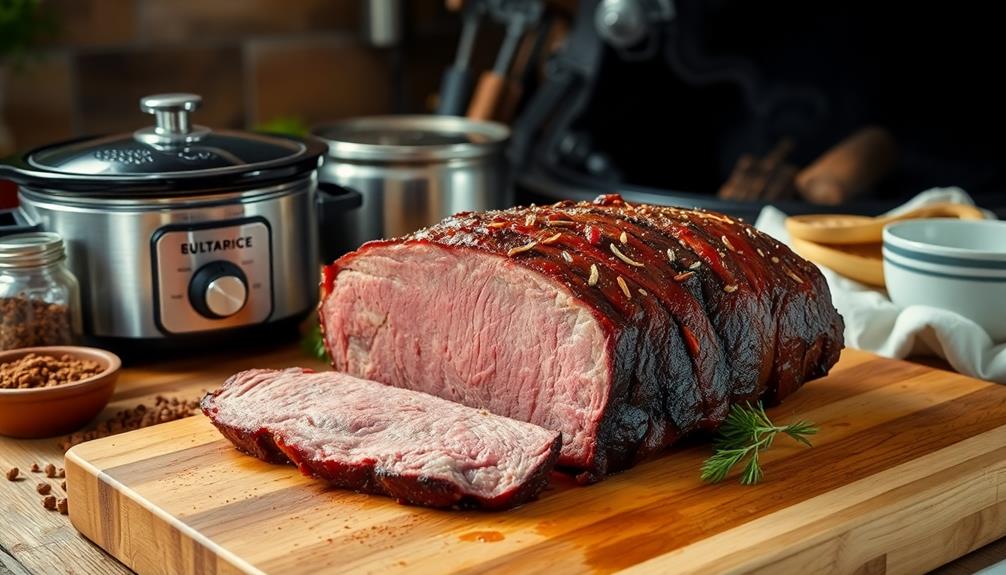
Cooking brisket is an art that combines technique and patience, leading to a tender and flavorful dish. You have several methods to choose from, each offering unique results. Here's a quick overview of popular cooking methods for brisket:
| Method | Cooking Time | Key Benefits |
|---|---|---|
| Smoking | 12-18 hours | Infuses deep, rich flavor |
| Braising | 3-5 hours | Keeps meat moist and tender |
| Oven Roasting | 3-4 hours | Simple and consistent results |
| Sous Vide | 24-48 hours | Precise temperature control |
| Pressure Cooking | 1-2 hours | Fast cooking while retaining flavor |
Each method requires a little different approach, but they all can yield delicious brisket. When smoking, you'll want to keep a steady temperature for hours. Braising involves cooking in liquid, which really enhances tenderness. Oven roasting is straightforward, allowing for easy preparation. If you're short on time, pressure cooking can be a lifesaver. Lastly, sous vide gives you control over the doneness, producing perfectly cooked brisket. Choose your method based on your schedule and desired flavor!
Seasoning and Marinating
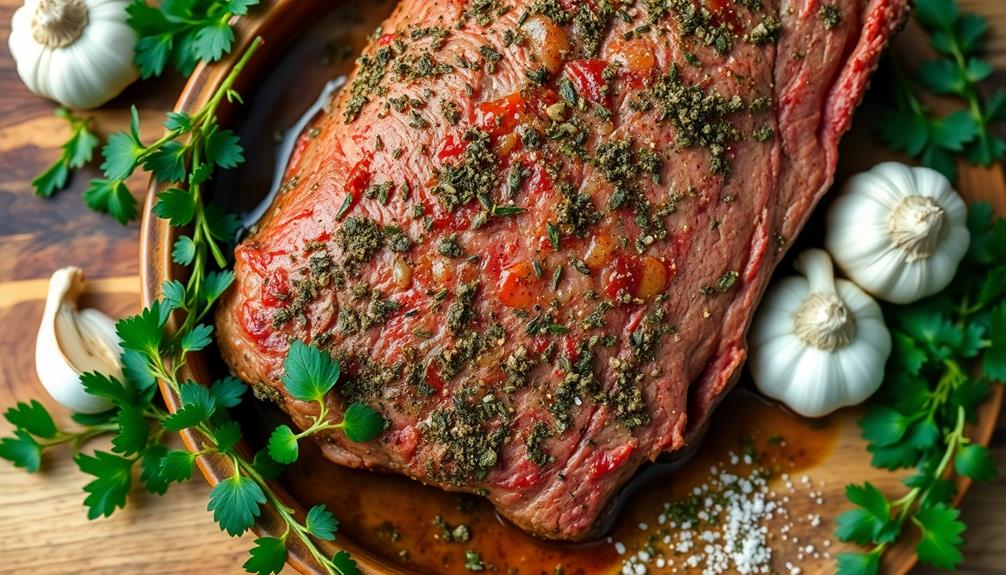
Choosing the right cooking method for brisket sets the stage, but don't underestimate the importance of seasoning and marinating. Proper seasoning enhances the beef's natural flavor, while marinating adds moisture and tenderness. Start by applying a dry rub; a mix of salt, black pepper, garlic powder, and paprika works wonders. Don't be shy—generously coat the brisket, ensuring it's evenly seasoned on all sides.
If you have time, consider marinating your brisket. A simple marinade of olive oil, vinegar, and your favorite herbs can work magic. Let it soak for at least four hours, or overnight for deeper flavor penetration. This not only infuses the brisket with flavor but also helps to break down tough fibers, making it more tender.
When seasoning and marinating, think about balance. You want to enhance the meat's natural richness without overpowering it. After marinating, remove the brisket from the marinade and let it sit at room temperature for about 30 minutes. This helps the brisket cook evenly. Remember, seasoning and marinating aren't just steps; they're crucial to achieving that melt-in-your-mouth brisket you crave.
Slicing and Serving Tips
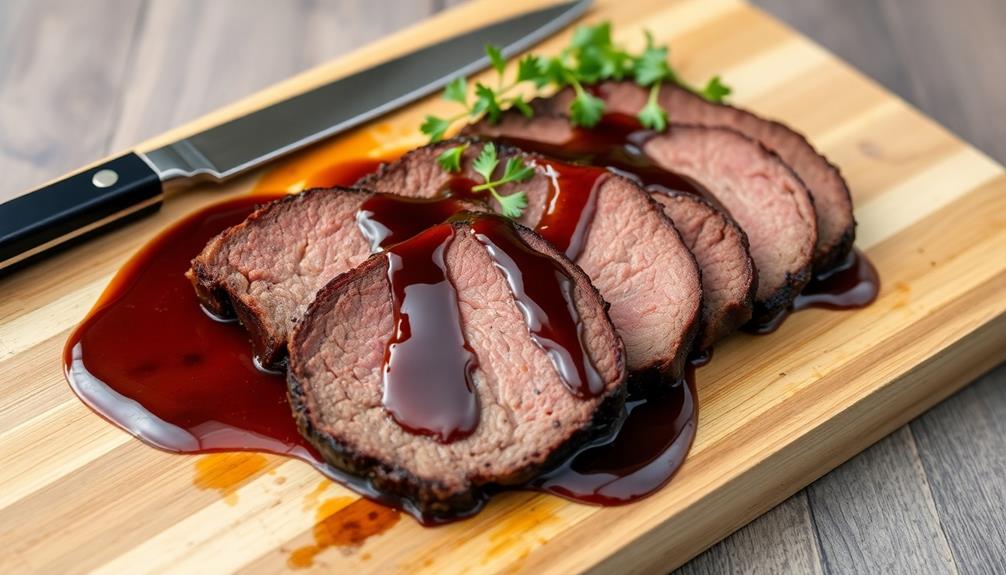
Master the art of slicing brisket to ensure each bite is as flavorful and tender as possible. Start by letting your brisket rest for at least 30 minutes after cooking. This resting period allows the juices to redistribute, making each slice juicier.
When you're ready to slice, grab a sharp carving knife or a brisket slicer. It's crucial to slice against the grain, which helps break down the muscle fibers and enhances tenderness. Identify the direction of the grain and make your slices about a quarter-inch thick. This thickness strikes a balance between easy handling and maintaining juiciness.
Consider serving your brisket on a cutting board, garnished with fresh herbs or pickles for added flavor. If you've prepared sides, like coleslaw or baked beans, arrange them beautifully on the plate to complement your brisket.
Frequently Asked Questions
Can I Freeze Leftover Brisket, and How Long Will It Last?
Yes, you can freeze leftover brisket. Just wrap it tightly in plastic wrap or foil, and it'll last up to three months in the freezer. Thaw it in the fridge before reheating for best results.
What Side Dishes Pair Well With Brisket?
When you're planning a meal, consider pairing brisket with creamy coleslaw, buttery corn, or tangy pickles. These sides complement the rich flavors, enhancing your dining experience and creating a delightful balance on your plate.
How Do I Store Leftover Brisket Properly?
After the feast, let your brisket cool, then wrap it tightly in foil or plastic. Store it in an airtight container in the fridge for up to four days, or freeze for longer enjoyment.
Can I Cook Brisket in a Slow Cooker?
Yes, you can cook brisket in a slow cooker! Just season the meat, add some liquid for moisture, and let it cook low and slow. You'll end up with tender, flavorful brisket that's easy to enjoy.
What Kind of Wood Is Best for Smoking Brisket?
"Where there's smoke, there's flavor." For smoking brisket, you can't go wrong with oak or hickory. They add rich, bold flavors that complement the meat beautifully, making your brisket truly unforgettable. Enjoy the process!
Conclusion
In the grand finale of your culinary symphony, let your brisket rest like a star on stage, soaking up all those delicious juices. As you slice against the grain, watch the tender meat reveal its secrets, each piece a flavorful treasure. When you serve it, you're not just sharing a meal; you're offering a warm embrace of smoky goodness and savory delight. So gather your loved ones, and let the feast begin—this is where memories are made!
